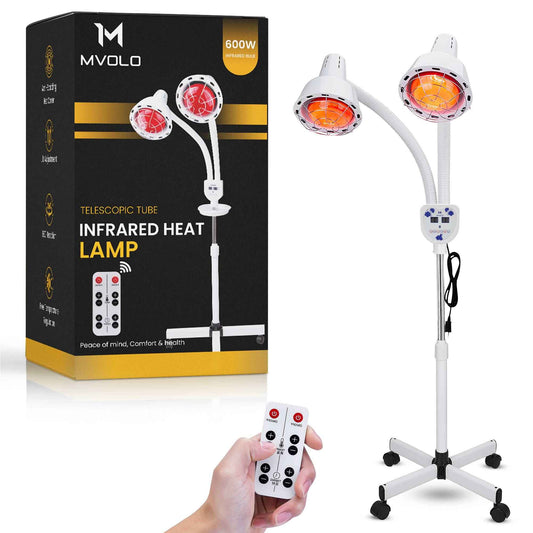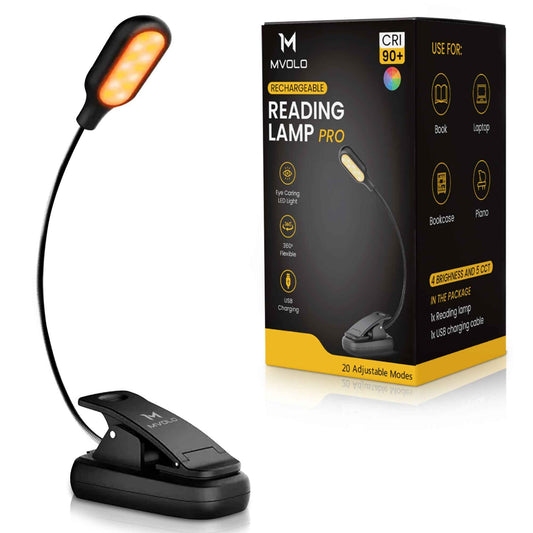Red Light Therapy Sleep Benefits You Need to Know
Part
We all know that getting a good night's sleep is essential for maintaining our overall health and well-being. But for many of us, falling asleep or staying asleep throughout the night can be a challenge. Whether it’s stress, anxiety, or just a hectic lifestyle, sleep problems are becoming more common than ever. If you're one of the millions struggling to sleep soundly, you may be wondering: Is there a natural, simple solution to improve the quality of your sleep? That’s where Red Light Therapy comes in.
Red Light Therapy, a non-invasive treatment that uses low-wavelength red light, has gained popularity for its benefits in improving sleep. But how exactly does it work, and why should you consider it as part of your sleep routine? In this article, we’ll dive into the Red Light Therapy sleep benefits you need to know, breaking down its science and offering tips on how you can use it to enhance your sleep.
What is Red Light Therapy?
Before we dive into how it improves sleep, let's first understand what Red Light Therapy (RLT) is. RLT involves exposure to low-wavelength red light, which is applied to the skin using specific devices like lamps or handheld devices. Unlike bright, blue light that keeps you awake, red light is soothing and calming, working to gently influence your body’s natural rhythms.
This light has the ability to penetrate deep into the skin, where it interacts with cells to promote healing and recovery. Research suggests that Red Light Therapy helps improve cellular function, increases blood circulation, and stimulates the production of energy in your cells. But what does all this mean for sleep? Let’s take a closer look.
Red Light Therapy Sleep Benefits
1. Helps Increase Melatonin Production
Melatonin is often referred to as the "sleep hormone" because it plays a critical role in regulating your sleep-wake cycle. Our bodies naturally produce melatonin when it gets dark, signaling to us that it’s time to wind down and prepare for sleep. However, exposure to artificial light, especially blue light from screens, can interfere with melatonin production, making it harder for you to fall asleep.
Here’s where Red Light Therapy comes in. Studies have shown that exposure to red light can actually help increase melatonin production. This means that by using Red Light Therapy before bed, you’re naturally supporting your body’s ability to prepare for sleep. Think of it as setting the stage for your body to go into sleep mode more easily.
2. Improves Sleep Quality
It's not just about falling asleep, but also about staying asleep and waking up feeling rested. Many people suffer from disrupted sleep cycles, whether it’s waking up in the middle of the night or struggling to reach the deeper stages of sleep. Red Light Therapy can help improve your sleep quality by promoting deeper and more restorative sleep stages, such as REM sleep, where your body performs essential repairs and your brain processes memories.
By using Red Light Therapy regularly, you might find yourself waking up feeling more refreshed and less groggy. In fact, a study on athletes showed that Red Light Therapy helped them experience deeper sleep, which resulted in improved performance during the day.
3. Reduces Stress and Anxiety
We all know that stress and anxiety can make it difficult to get a good night’s rest. When you’re stressed, your body produces more cortisol, the "stress hormone," which can keep you awake or cause restless sleep. By lowering cortisol levels and relaxing the body, Red Light Therapy can help reduce stress and anxiety, making it easier for you to unwind before bed.
Think of Red Light Therapy as a way to signal to your body that it's time to relax. The soft, soothing light helps to calm your nervous system, setting the stage for peaceful, uninterrupted sleep.
4. Supports Healthy Circadian Rhythms
Your circadian rhythm, also known as your internal body clock, regulates your sleep-wake cycles and is influenced by natural light exposure. Disruptions to your circadian rhythm can lead to sleep problems, especially if you’re exposed to artificial light late into the night. Red Light Therapy can help support and stabilize your circadian rhythm, ensuring that your body is aligned with the natural day-night cycle.
Using Red Light Therapy in the evening can help signal to your body that it’s time to wind down, promoting a smoother transition from wakefulness to sleep. This is especially helpful for individuals who struggle with insomnia or other sleep disorders that are caused by circadian rhythm disruptions.
5. Non-Invasive and Natural
One of the most appealing aspects of Red Light Therapy is that it's a natural and non-invasive way to support better sleep. Unlike medications or sleep aids, which can come with side effects or dependencies, Red Light Therapy doesn’t pose any risks. It’s simply light therapy, meaning there’s no need for pills or other chemical treatments.
This makes Red Light Therapy an ideal option for anyone who’s looking for a non-pharmaceutical solution to sleep issues. Plus, it’s easy to incorporate into your nightly routine—just 10-20 minutes of exposure before bed is all it takes to start seeing benefits.
6. Boosts Your Energy Levels
While it may seem counterintuitive, using Red Light Therapy can actually give you more energy during the day. By helping you achieve better, deeper sleep, you’ll wake up feeling more rested and ready to take on the day. The increased energy from better-quality sleep will leave you feeling more alert and productive throughout the day, making it easier to power through tasks with focus and clarity.
7. Helps With Sleep Disorders Like Insomnia
Red Light Therapy has shown promise as an effective treatment for people suffering from insomnia. A study published in the journal Sleep Medicine Reviews found that Red Light Therapy significantly improved sleep quality in individuals with insomnia, helping them fall asleep faster and stay asleep longer.
Because Red Light Therapy helps regulate melatonin levels and supports your body’s natural rhythms, it can be a powerful tool for managing chronic sleep disorders.
Red Light Therapy for Insomnia – Natural Sleep Aid That Works
If you’ve ever struggled with insomnia, you know how challenging it can be to find a solution that works. Traditional sleep aids may come with unwanted side effects, and over-the-counter remedies don’t always do the trick. Red Light Therapy, however, offers a natural alternative that’s gaining attention for its ability to help manage insomnia.
By boosting melatonin production and helping to stabilize your circadian rhythm, Red Light Therapy can provide the gentle support your body needs to fall asleep faster and stay asleep longer. Whether you're dealing with chronic insomnia or occasional sleepless nights, adding Red Light Therapy to your bedtime routine can be a simple and effective solution.
Red Light Therapy for Better Rest – Science-Backed Sleep Support
Red Light Therapy isn’t just a trend—it’s a scientifically backed method for improving sleep. Research shows that red light exposure can influence sleep patterns by increasing melatonin levels, improving sleep depth, and supporting overall sleep quality. This makes it a valuable addition to your sleep routine, especially if you're looking for a natural way to enhance rest without relying on medications.
Whether you're a shift worker dealing with sleep disruptions or simply looking for a way to get better rest, Red Light Therapy provides a safe and effective way to support your body’s natural sleep processes. It’s not only about falling asleep, but also about achieving restorative, high-quality sleep that leaves you feeling refreshed and energized.
Red Light Therapy for Shift Workers: Boost Sleep & Energy Naturally
For shift workers, getting adequate sleep can be especially difficult. Working irregular hours can disrupt your circadian rhythm, making it harder to fall asleep and stay asleep during the day. However, Red Light Therapy can help shift workers by promoting a more stable sleep-wake cycle.
By using Red Light Therapy before bed, shift workers can signal to their body that it’s time to rest, even if the sun is still up. The therapy supports melatonin production and helps regulate the body’s internal clock, making it easier to adjust to different sleep schedules. This can lead to better sleep quality, improved energy levels, and enhanced focus during waking hours.
Red Light Therapy to Fall Asleep Faster: Science-Backed Benefits
Struggling to fall asleep quickly? Red Light Therapy can help speed up the process by encouraging your body to enter a relaxed state. The soft, soothing red light helps signal to your brain that it’s time to wind down, increasing melatonin production and allowing you to fall asleep faster.
Studies have shown that Red Light Therapy can reduce the time it takes to fall asleep and help you achieve deeper sleep stages. So, if you’re tired of lying awake for hours, Red Light Therapy could be the gentle nudge your body needs to get to sleep faster and enjoy a more restful night.
How to Use Red Light Therapy for Better Sleep
Now that you know how Red Light Therapy can benefit your sleep, you might be wondering: How can you use it effectively? Here are a few tips to help you get started:
1. Choose the Right Device
To experience the full benefits of Red Light Therapy, you’ll need to use a device designed for this purpose. There are several options available, including handheld devices, red light lamps, and Red Light Therapy masks. Make sure to choose a device that emits the right wavelengths of light (typically between 600-650 nm) to ensure you’re getting the most effective treatment.
2. Use It Before Bed
For the best results, use Red Light Therapy about 10-20 minutes before bed. This will help signal to your body that it’s time to wind down and get ready for sleep. Be consistent—using it regularly each night can help you see more lasting improvements in your sleep patterns.
3. Incorporate It Into Your Nighttime Routine
To maximize the effects of Red Light Therapy, consider incorporating it into your regular nighttime routine. Try using it in combination with other relaxing activities, like reading a book or taking a warm bath, to further promote relaxation and stress relief.
4. Be Patient
As with any new health regimen, it may take some time to see results. Be patient and give your body time to adjust to the effects of Red Light Therapy. Over time, you should notice improvements in your sleep quality and how rested you feel in the morning.
Conclusion
If you’ve been struggling with sleep, Red Light Therapy could be the natural solution you've been looking for. From increasing melatonin production to improving sleep quality, reducing stress, and supporting healthy circadian rhythms, Red Light Therapy offers a simple, non-invasive way to enhance your sleep. By incorporating it into your nightly routine, you may find yourself falling asleep faster, staying asleep longer, and waking up feeling more refreshed and energized.
As always, if you’re looking for high-quality Red Light Therapy devices, Mvolo offers a range of products designed to improve your sleep and overall well-being. Give it a try and see how Red Light Therapy can transform your nights—and your days!
Frequently Asked Questions (FAQs)
-
What exactly is Red Light Therapy?
Red Light Therapy involves exposure to low-wavelength red light that penetrates the skin to improve cellular function, support relaxation, and help improve sleep. -
How does Red Light Therapy help with sleep?
Red Light Therapy boosts melatonin production, regulates your circadian rhythm, reduces stress, and promotes deeper sleep, helping you get better rest. -
How long should I use Red Light Therapy for sleep?
Use Red Light Therapy for 10-20 minutes before bed to maximize its sleep benefits. -
Is Red Light Therapy safe for sleep?
Yes! Red Light Therapy is a safe, non-invasive method with no harmful side effects, making it a great natural alternative to sleep aids. -
Can Red Light Therapy help with insomnia?
Absolutely! Red Light Therapy has been shown to improve sleep quality, making it an effective treatment for those suffering from insomnia.






